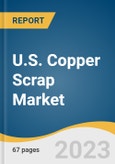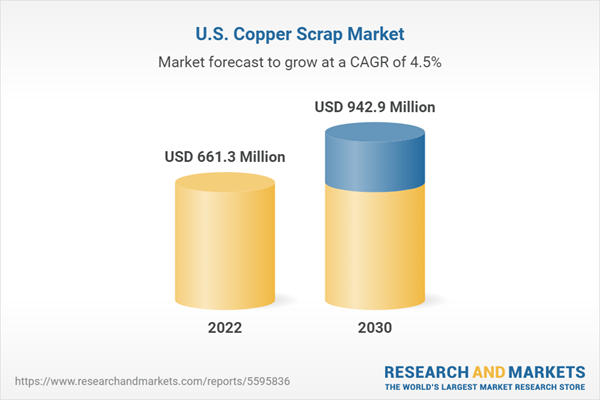Copper scrap finds applications in foundries such as casting plants, bronze products, and gunmetal products. Copper casting parts made from copper alloys and bronze are used in construction, electrical, mining, oil & gas, general, and industrial applications. This segment is projected to grow on account of favorable properties of copper such as corrosion resistance, weathering resistance, low maintenance, recyclability, superior strength, magnetic permeability, electrical conductivity, and ease of fabrication.
With electrification increasing at a rapid pace in the automobile industry, the demand for metals necessary for the transition from ICE vehicles to electric vehicles is projected to rise over the coming years. The share of EV sales as a proportion of total vehicles has been growing. The number of EVs in use around the globe has witnessed a rapid increase between 2019 and 2022. The global sales of EVs reached 10.5 million units in 2022, compared to sales of around 6.7 million units recorded in 2021.
The irregular supply of copper scrap is one of the major challenges in the industry and thus restrains the growth of the market. Loss of copper scrap occurs as most of the scrap ends up in landfill sites. The availability of scrap is also adversely impacted by the long-life cycle of copper products. It is tied up for 10 to 20 years in the transportation sector, more than 30 years in construction and infrastructure, and between 10 to 30 years in the industrial machinery & equipment sector, before it becomes available for recycling.
Technology upgrades and investments are required to improve the recycling rate around the world. This involves more machinery & equipment for scrap processing and separation, trucks, and vehicles to transport scrap, technological upgrades to handle diverse, complex, and rapidly changing material compositions, and product miniaturization. Thus, these considerable hurdles restrain the growth of the copper market, as copper scrap is not available regularly for optimized production.
Private investments in the scrap sector are growing. For instance, in the U.S., Aurubis AG has targeted investment for three actions: expanding its recycling capacity including e-waste or electronic scrap, upgrading technology to convert complex materials into high-grade scrap, and developing closed loops for customers, which can end the cycle of metal waste.
U.S. Copper Scrap Market Report Highlights
- Based on application, the brass mills segment is projected to progress at a substantial CAGR of 4.8%, in terms of revenue, from 2023 to 2030. Brass mills melt and produce alloy materials to further manufacture tubes, sheets, strips, bars, rods, extrusions, forgings, and mechanical wires
- The Western U.S. region is projected to advance at a lucrative growth rate over the forecast period. The investments in copper recycling facilities by foreign and local players are projected to benefit the market growth in this region
- The rising demand for electric vehicles (EVs) is projected to push the demand for copper, and thus copper scrap. EVs required 3 to 4 times more copper compared to internal combustion engine vehicles
Table of Contents
Companies Mentioned
- Ames Copper Group
- Aurubis AG
- Denkai America
- Hussey Copper
- Joseph Freedman Co., Inc
- Louis Padnos I&M
- Mueller Industries
- OmniSource LLC
- SIC Recycling
- United Scrap Metal
- The Wieland Group
- The David J. Joseph Company
Methodology

LOADING...
Table Information
| Report Attribute | Details |
|---|---|
| No. of Pages | 67 |
| Published | May 2023 |
| Forecast Period | 2022 - 2030 |
| Estimated Market Value ( USD | $ 661.3 Million |
| Forecasted Market Value ( USD | $ 942.9 Million |
| Compound Annual Growth Rate | 4.5% |
| Regions Covered | United States |
| No. of Companies Mentioned | 12 |









